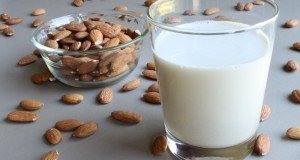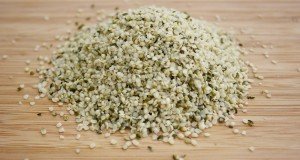Breaking NEWS: Vitamin D levels alter the risk of type 1 and 2 diabetes, professor reveals
(NaturalHealth365) As of 2015, 30.3 million Americans – almost ten percent of the population – have diabetes, while another 84.1 million have prediabetes – which can lead to diabetes if unchecked. The prevailing medical ‘wisdom’ is that diabetes is precipitated by obesity, lack of exercise and overconsumption of refined sugars. But Dr. Cedric Garland, a professor in the Division of Epidemiology at University of California San Diego, begs to differ by saying, ‘it’s all in the vitamin D levels.’
Dr. Garland maintains that both type 1 and type 2 diabetes result from vitamin D deficiencies – which are widespread in the United States. With proper supplementation to raise vitamin D levels, he says, the majority of all cases of diabetes could be prevented. And, a study (featured – below) lead by Dr. Garland supports his assertion.
An extensive, 12-year-long cohort study shows 80 percent of type 2 diabetes could be prevented
In a study involving 900 participants recently published in the peer-reviewed journal PLOS ONE, researchers set out to examine the effects of vitamin D levels on the incidence of type 2 diabetes.
Vitamin D levels – in the form of 25-hydroxyvitamin D – were measured throughout the study, and the volunteers were followed to see if they developed type 2 diabetes. (None of them had diabetes at the beginning of the study).
The team found that individuals with blood concentrations over 30 ng/mL (nanograms per milliliter) had only one-third the incidence of diabetes, when compared to those under 30 ng/mL.
And, people with the highest levels of vitamin D (50 ng/ml) were a shocking five times less likely to develop type 2 diabetes than those who had the lowest levels (defined as 20 ng/mL or less).
The researchers concluded that raising blood levels of vitamin D to 50 ng/mL could prevent up to 80 percent of all cases of type 2 diabetes. Keep in mind, only about 2 percent of the U.S. and European population currently display these ideal levels.
So, you may still be wondering, ‘how (exactly) are vitamin D deficiencies and diabetes linked?’
Warning: Low vitamin D levels jeopardizes the production of insulin
To explain what can happen when there is insufficient vitamin D – and how this can lead to disease – Dr. Garland uses the “DIAB” model. DIAB is an acronym that stands for four different factors which affect the development of diabetes: vitamin D, insulin, autoimmunity and beta cells.
One of the dangers of a shortfall of vitamin D is that the deficiency compromises the fragile pancreatic membrane that protects insulin-producing beta cells, located in the Islets of Langerhans in the pancreas.
This weakening of the membrane can make these fragile beta cells – which can’t readily regenerate – vulnerable to infection and damage.
The immune system reacts by targeting and killing the infected cells, which in turn reduces the amount of insulin produced by the pancreas. As the vulnerable beta cells continue to be damaged by the compromised membrane, their population plummets – and type 2 diabetes is the result.
Insufficient sunlight exposure inhibits vitamin D production
The development of diabetes is closely associated to the amount of sunlight a person receives – or doesn’t receive.
No doubt, insufficient sunlight exposure can cause a vitamin D deficiency – which Dr. Garland says is the real culprit behind virtually all type 1 diabetes. In contrast to the existing medical stereotype, he notes that most children who develop the disease are neither overweight, nor eating excessive sugar.
In fact, studies have shown that incidence of type 1 diabetes is lowered in populations living near the equator – and is higher at latitudes of 45 degrees and over in both the Northern and Southern Hemispheres.
Dr. Garland notes that wearing clothing that covers everything but the face and hands – a common mode of dress in winter months for people living in non-tropical and northern climes – leaves a mere 8 percent of the skin exposed, thus blocking 92 percent of the biosynthesis of vitamin D.
Natural health experts recommend getting at least twenty minutes of direct sunlight, at least three times a week. In addition, most people require supplementation to reach optimal levels of vitamin D.
How much vitamin D should I consume?
Natural health experts and integrative healthcare providers are often at odds with conventional medical authorities when it comes to proper vitamin D dosage.
In 2010, the National Academy of Medicine upped the recommended daily allowance of vitamin D to 600 IU a day for adults, up from a (ludicrous) 200 IU – and set a “tolerable upper level” of 4,000 IU.
And, while 600 IU a day may be effective in preventing rickets – a bone disease caused by lack of calcium – Dr. Garland deems it “dreadfully low” for protective purposes against chronic disease conditions.
Natural health experts may recommend daily vitamin D3 dosages in the amount of 4,000 IU to 10,000 IU. And, if you’re really low, you may need more – for a short period of time – until the deficiency is resolved.
Of course, you should consult with your physician to help establish a vitamin D3 dosage that is right for you. (Note: experts advise opting for vitamin D3 – cholecalciferol – in favor of vitamin D2, or ergocalciferol. When it comes to preventing diabetes and other diseases, Vitamin D2 – the form found in plants – is not as effective as vitamin D3).
There is also disagreement concerning optimal blood concentrations for 25-hydroxyvitamin D – the form in which vitamin D is found in the body.
While the current recommended standard for 25-hydroxyvitamin D levels is 20 ng/mL, Dr. Garland insists that 50 ng/mL of 25-hydroxyvitamin D is necessary to begin protecting against diabetes.
Diabetes, which raises the risk of a heart attack and stroke, was the seventh leading cause of death in the nation in 2015. Vitamin D supplementation – safe, inexpensive and non-toxic – shows exciting potential for preventing this dangerous disease.
Sources for this article include:











